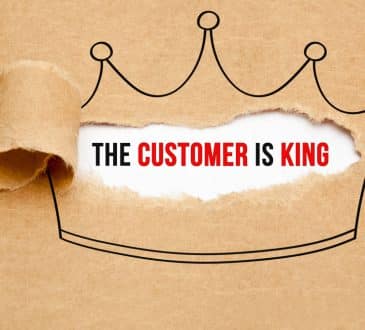Building High-Performing Teams: Strategies from the Battlefield to the Boardroom

As a former Marine Corps Scout Sniper Team Leader, building high-performing teams wasn’t just an ideal—it was a matter of survival. In the crucible of combat, where the fog of war obscures clarity and complexity reigns, cohesion and peak performance are paramount. This experience instilled in me a deep understanding of the dynamics that drive teams to excel, lessons that translate seamlessly to today’s dynamic business environment.
The modern business landscape, much like the battlefield, is characterized by constant change and relentless competition. In this arena, the ability to forge high-performing teams is not merely advantageous, it’s essential for organizational success. These teams, distinguished by their consistent delivery of exceptional results, their capacity for innovation, and their unwavering collaborative spirit, are the engines that propel organizations forward.
Drawing from my experiences leading my sniper team, I’ve identified several key strategies that are crucial for cultivating this level of performance:
- Establish a Clear Vision and Goals: The Guiding Star
Just as a compass guides a traveler, a clear vision and well-defined goals provide direction and purpose for a team. Leaders must articulate the team’s mission and objectives with absolute clarity, ensuring that every member understands their role and how it contributes to the overarching purpose. This clarity fosters alignment, ownership, and accountability, empowering individuals to stay motivated and committed even amidst challenges. When everyone knows what they’re working towards, their efforts become unified and focused. - Foster Open Communication: The Lifeblood of Collaboration
Effective communication is the lifeblood of any high-performing team. It’s the conduit through which ideas flow, feedback is exchanged, and concerns are addressed. Leaders must cultivate an environment where open dialogue is not only encouraged but expected. Regular check-ins, structured team meetings, and the strategic use of collaborative tools can facilitate this exchange. Leaders must model transparency and active listening, demonstrating that every voice is valued and heard. - Build Trust: The Foundation of Resilience
Trust is the bedrock upon which high-performing teams are built. Team members must feel secure enough to take calculated risks, acknowledge mistakes as learning opportunities, and challenge the status quo without fear of reprisal. Leaders earn trust through consistent behavior, unwavering reliability, and genuine support. Providing a “maneuver box”—space to explore different courses of action, where failure is viewed as a stepping stone to success—builds confidence and encourages innovation. When trust permeates a team, collaboration becomes effortless and creativity flourishes. - Leverage Strengths: Harnessing Collective Genius
High-performing teams thrive on meritocracy. They recognize that diverse skills, perspectives, and experiences are invaluable assets that can lead to more creative solutions and better decision-making. Leaders must identify and leverage the unique strengths of each team member, assigning roles that align with their expertise and passions. This not only optimizes individual performance but also fosters a sense of belonging and engagement. When individuals feel valued for their unique contributions, their confidence soars and their commitment deepens.These strategies, honed in the crucible of combat and refined in the demanding world of business, provide a roadmap for building high-performing teams that can conquer any challenge and achieve extraordinary results. They are not merely theoretical concepts but practical tools that, when implemented with intention and consistency, can transform any group of individuals into a cohesive, unstoppable force. -
Encourage Collaboration and Teamwork: The Power of Synergy
Collaboration is the engine of high performance. Leaders must cultivate a culture of teamwork, where members actively support one another and work in concert toward shared goals. One of my most effective tools for achieving this is cross-training. When every member of the team can perform the duties of their teammates, it creates resilience and flexibility. This is essential for maintaining momentum when someone is absent, ensuring that progress continues unimpeded. - Provide Opportunities for Development: Investing in Growth
Investing in the growth and development of team members is not just an expense—it’s a strategic investment in future success. Leaders should identify training opportunities, mentorship programs, and career advancement paths that align with individual aspirations and organizational needs. Encouraging continuous learning not only enhances skills but also boosts morale and engagement, as team members feel valued and supported in their professional journeys. Critically, all training should have a measurable outcome, a metric or grade that quantifies the learning experience. It is imperative to immediately follow up after completing a training evolution, informing the team of their performance and score. Leaders should utilize open-ended questions to probe for understanding and identify opportunities for team growth.
- Celebrate Achievements: Recognizing Success
Recognizing and celebrating both individual and team achievements is a powerful way to boost morale and motivation. Leaders should take the time to acknowledge successes, both big and small, and express genuine appreciation for the hard work and dedication demonstrated by team members. Celebrations, whether formal or informal, foster a positive team culture and reinforce the behaviors that contribute to high performance.
Conclusion: Building a Culture of Excellence
Building high-performing teams is not a destination—it’s an ongoing journey that requires intentionality, commitment, and consistent effort from both leaders and team members. By establishing a clear vision, fostering open communication, building trust, leveraging individual strengths, encouraging collaboration, providing development opportunities, and celebrating achievements, organizations can create an environment where teams not only thrive but excel. In doing so, they position themselves for sustained success in an increasingly competitive and dynamic landscape.
Written by Ernest R. Twigg.
Have you read?
Countries with the most gold reserves.
World’s Best Public Relations Agencies (Top PR Firms).
Countries with the highest human freedom.
World’s Safest & Most Dangerous Countries For Travelers.
Longest and Shortest Life Expectancies in the World.
Bring the best of the CEOWORLD magazine's global journalism to audiences in the United States and around the world. - Add CEOWORLD magazine to your Google News feed.
Follow CEOWORLD magazine headlines on: Google News, LinkedIn, Twitter, and Facebook.
Copyright 2025 The CEOWORLD magazine. All rights reserved. This material (and any extract from it) must not be copied, redistributed or placed on any website, without CEOWORLD magazine' prior written consent. For media queries, please contact: info@ceoworld.biz








